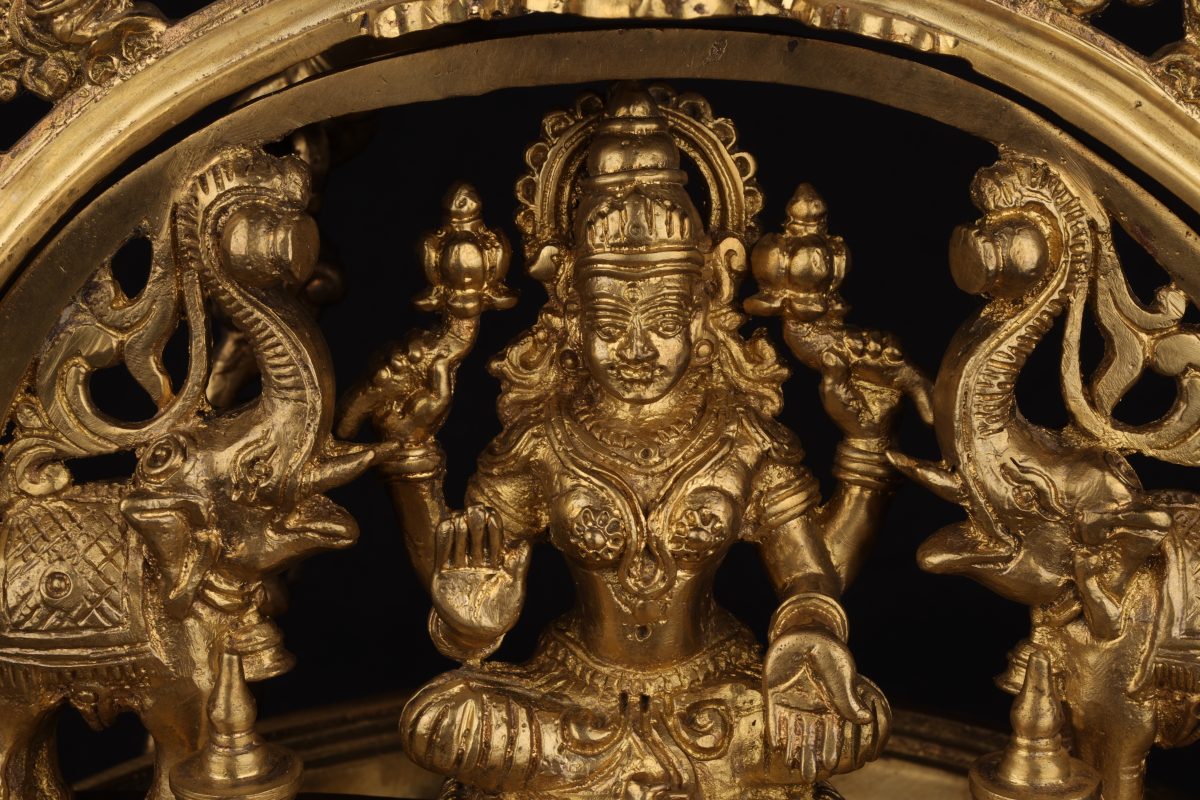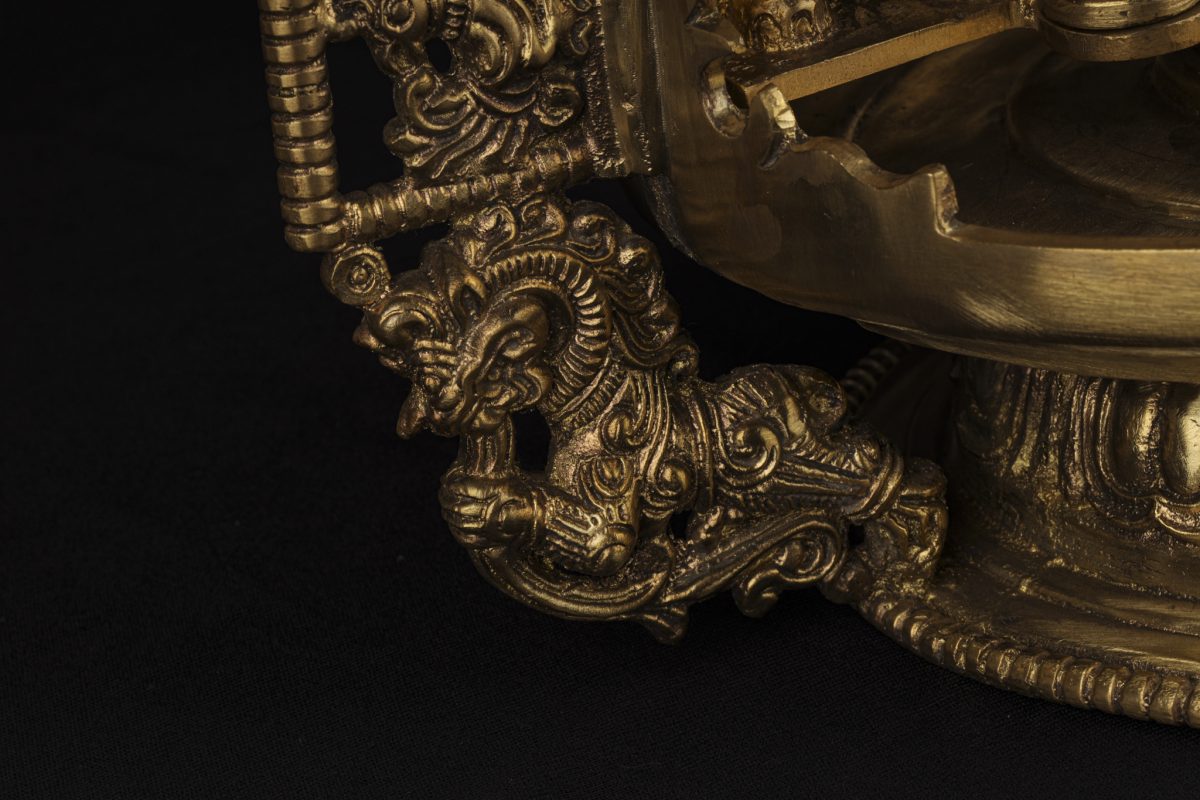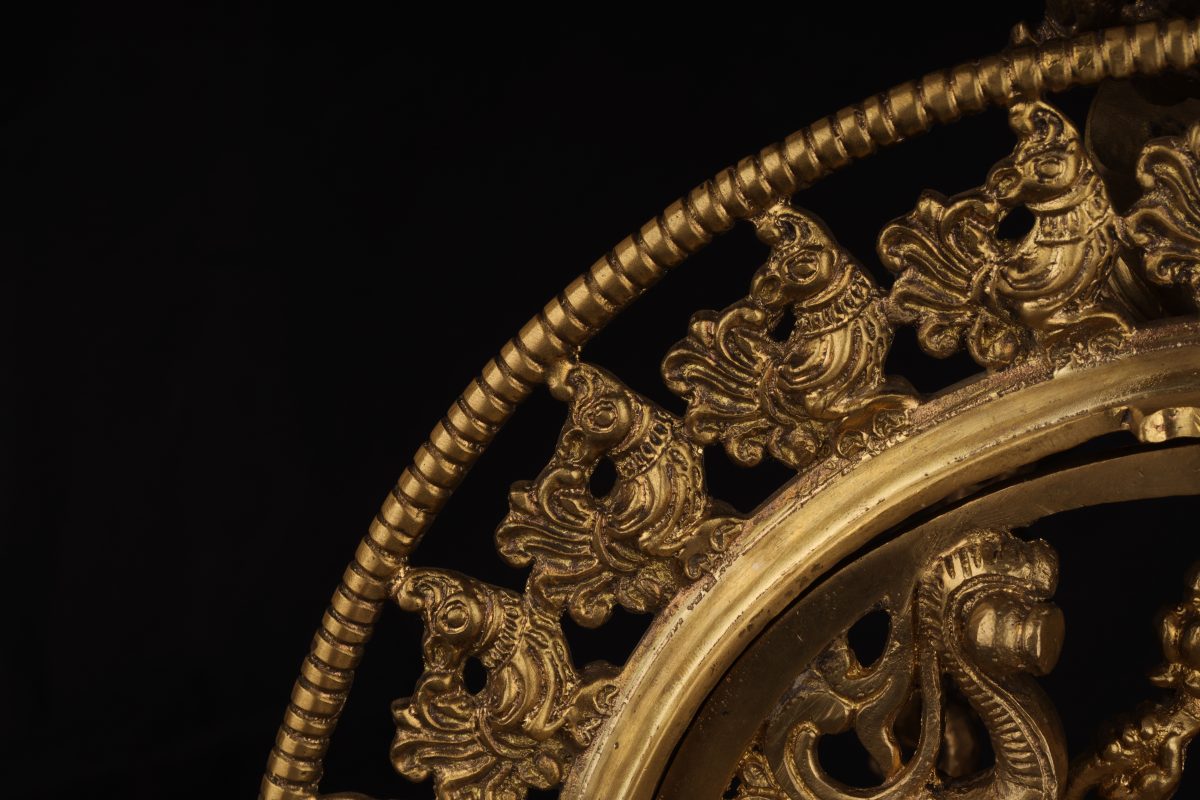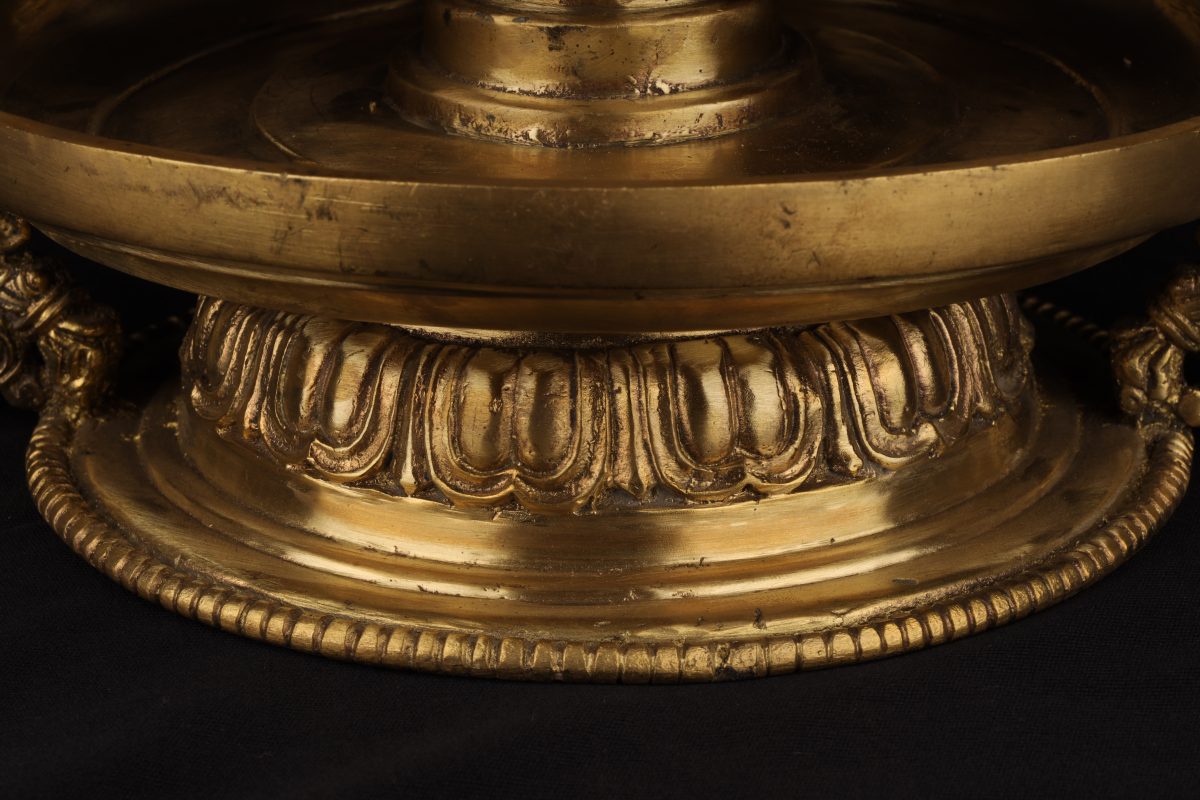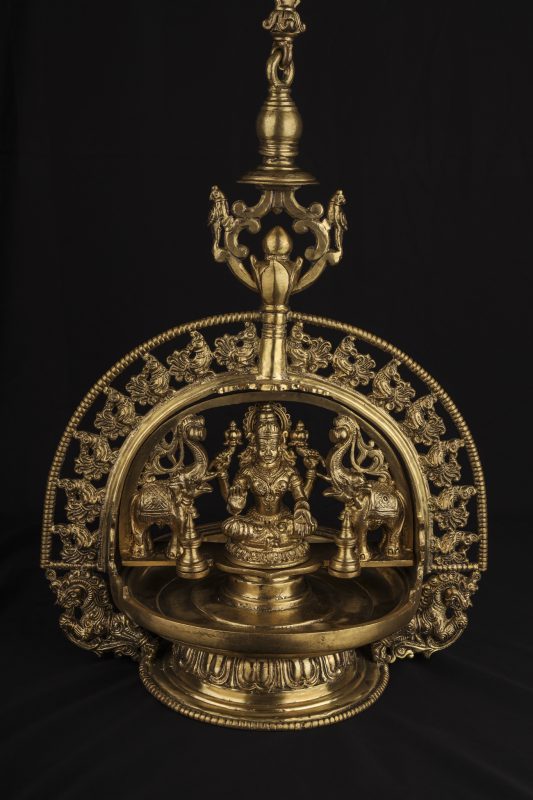
INTRODUCTION
The Mahalakshmi Vilakku from a small temple town in Kerala is made in the "lost" wax technique of bell metal casting. It is a gorgeous proof of our claim that some time taking traditional techniques can yield results that are in a league of their own.
In the Hindu Pantheon, Goddess Lakshmi manifests as Ashtalakshmi- her 8 forms that preside over 8 sources of wealth- spirituality, material wealth, agriculture, royalty, knowledge, courage, progeny and victory. The fourth manifestation that grants royal splendour is known as the Gajalakshmi. She is always framed by two elephants (Gaja). If a Gajalakshmi idol has four hands, she is known as Mahalakshmi. Two hands hold lotuses, and the other two are shown in the Varada (Boon giving) Mudra and the Abhay (fear dispeller) Mudra.
This Diya was made in a village on the Malabar coast, where the "lost" wax technique of bell metal or bronze casting still perseveres through the hands of craftsmen called Mosaaris.
What makes this technique remarkable, is that each piece is first modelled in a special wax. This allows the artisans to mould and detail each figurine separately, giving them clearly defined lines and facial features. Once its different parts have been assembled, the wax model is covered in a paste made with local earth and air dried for weeks. Once the cast is ready, it is slowly cooked and- just like that- the entire wax model inside is allowed to melt away, never to be shaped exactly the same again. This empty cast is then filled with liquid bell metal. On cooling the cast is shattered and final finishing touches and polish are done.
Artisans with this kind of patience are now rare, and their last remaining patrons are ancient temples who still value their skill.
An item of wax cast bronze does not compete with mass produced, sand cast brass replicas. Its sophistication and beauty are in a league of their own. Goddess Lakshmi, it is said, loves to dwell in the auspicious light fuelled by oil or ghee. This piece will not be a decorative element in a home; it is a surviving piece of our cultural history coming down from the days of the Dancing Girl of Indus Valley civilization. It is an heirloom that can bring everyday awe to generations.
